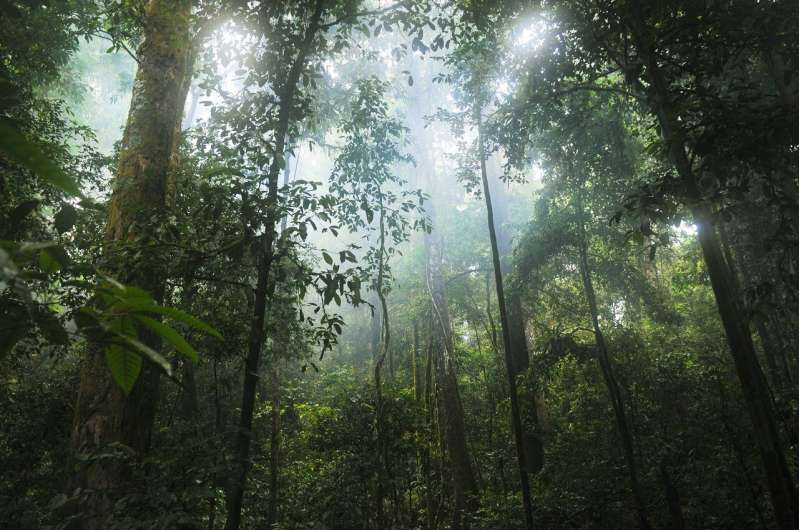Study reveals rainforest tree tactics for different climates

A University of Queensland-led team has completed one of the most comprehensive surveys of Australia's subtropical rainforests to document how climate dictates what species thrive in different locations. The work is in the journal Ecology Letters.
Ph.D. candidate Julian Radford-Smith spent two years collecting data on more than 25,000 trees between Gladstone in Queensland and Ballina in New South Wales.
"We spent up to 2 weeks at a time hiking and camping in remote locations," Radford-Smith said.
"This included a wide range of rainfall conditions from 600 millimeters each year near Monto to more than 2500 mm per year at Springbrook.
"We looked at almost half of all Australia's subtropical rainforest tree species and saw many different strategies that were used to survive in different conditions, giving us insight into what might happen as Earth's climate changes.
"For almost 300 tree species, we measured characteristics such as wood density and leaf size to describe how each uses sunlight and water.
"We then related these measurements to the climate where the species occurs.
"To survive in drier places, such as inland of Bundaberg, many tree species are shorter, have denser wood and smaller tubes for moving water from roots to leaves.
"Others like Queensland's iconic bottle trees store water in their trunks and drop leaves during the driest times to avoid stress.
"In wetter, elevated locations such as Lamington National Park, tree species were obviously much taller but they also had softer wood and larger water tubes."
More than 60% of Australia's plant species are found in rainforests, despite the ecosystem accounting for just 3% of the country's land mass.
Study co-author Associate Professor John Dwyer from UQ's School of the Environment said the research would help predict how climate change could alter where tree species thrive and how forests may change.
"If the climate continues to get warmer and rainfall patterns change, then we expect species from hotter and drier locations with better coping strategies to potentially infiltrate wetter forests," Dr. Dwyer said.
"Sadly, we may also see species from wetter forests that lack suitable coping strategies experience major declines."
During the survey, Radford-Smith, who previously worked as a botanist, discovered an undocumented species of myrtle near Miriam Vale south of Gladstone in Queensland.
"The tree is a relative of the lemon-scented myrtle, a Backhousia species, but it's not officially been described yet by the Queensland Herbarium," Radford-Smith said.
"After excitedly pacing around looking for more of the species, we celebrated over a meal of dehydrated spaghetti because I forgot to bring a lighter to heat water to cook it."
More information: Julian Radford鈥怱mith et al, A Functional Basis for the Assembly of Australian Subtropical Rainforest Tree Communities, Ecology Letters (2024).
Journal information: Ecology Letters
Provided by University of Queensland



















